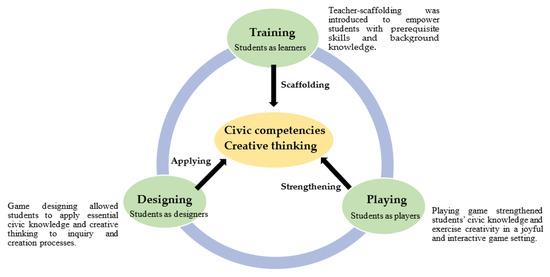Gamification in Education: how to Successfully Integrate Game elements into Standard Curricula
In today’s fast-evolving educational landscape, engaging students and making learning enjoyable have become top priorities for teachers and school administrators. Gamification in education—the practice of incorporating game elements such as points, badges, and leaderboards into teaching—has emerged as a powerful tool to boost student motivation, foster collaboration, and enhance learning outcomes. But how can you successfully integrate gamification into standard curricula without losing focus on academic rigor? in this thorough guide, we’ll explore the benefits, practical strategies, real-world examples, and step-by-step tips to make gamified education a reality in your classroom or online course.
What is gamification in Education?
Gamification in education refers to the integration of game mechanics—such as challenges, point systems, badges, progress bars, and leaderboards—into learning environments. Unlike traditional educational games that may be separate from core lessons, gamification blends these elements directly into instruction, assessments, classroom management, and student engagement tools.
- Points: Awarded for completing assignments or mastering skills.
- Badges: Earned by reaching milestones or demonstrating excellence.
- Leaderboards: Showcasing students’ progress and achievements to foster healthy competition.
- Quests/Challenges: Learning activities framed as missions,encouraging problem-solving and exploration.
- Levels: Tiered progression,unlocking new content or privileges as students advance.
“Gamification doesn’t mean turning your classroom into a video game. Instead, it’s about using what makes games engaging—feedback, rewards, progress—to make learning stick.”
The Benefits of Gamified Learning
Integrating game elements into curricula brings measurable advantages to both students and educators. Here’s why gamified education is gaining momentum worldwide:
1. Increased Student Engagement
Gamification grabs students’ attention, making lessons interactive and fun. The promise of rewards or recognition motivates active participation and sustained focus, even in challenging subjects.
2. Enhanced Motivation and Confidence
Earning points and badges provides instant feedback, encourages positive behaviors, and helps students set and achieve personal goals—boosting their confidence and intrinsic motivation.
3. Improved Retention and Deep Learning
- Quests, puzzles, and challenges foster critical thinking and problem-solving skills.
- Progress tracking aids spaced repetition and memory retention.
4.Fostering Collaboration and Social skills
Team-based games promote interaction, teamwork, and peer support—vital 21st-century skills.
5. instant Feedback and Adaptive Learning
Students receive real-time feedback, allowing them to learn from mistakes, adjust strategies, and personalize the learning process.
effective Gamification Strategies for Classrooms
Successful gamification goes beyond simple point-scoring. Here’s how you can weave game elements meaningfully into curricula across grade levels and subjects:
- Start with Clear Learning Objectives: Ensure all game elements align with curriculum standards and desired outcomes.
-
Use Digital Gamification Tools:
Platforms like Kahoot!, Quizizz, Classcraft, and Google Classroom add layers of interactivity, assessment, and fun.
- Implement Choice-Based Learning: Give students autonomy to select quests or challenges that match their interests and skill levels.
- Leverage Storytelling and Narrative: Frame lessons as epic adventures, science mysteries, or missions to add context and emotional engagement.
- Design Custom Badges & Recognition: Celebrate achievements with digital badges, certificates, and class recognition to foster a sense of accomplishment.
- Create Collaborative Challenges: Incorporate group quests, peer challenges, and team leaderboards to encourage collaboration, not just competition.
- Iterate & Get Feedback: Regularly survey students and refine your gamified systems for continuous betterment.
Successful Case Studies: Gamification in Action
1. Khan Academy’s Badges and Mastery Challenges
Khan academy leverages a robust badge system and mastery levels to encourage students to progress at their own pace. Analytics show increased time spent on learning tasks and meaningful mastery gains in math and science.
2. Quest to Learn (Q2L) – New York City
Q2L is a pioneer public school designed around game-based learning. Every lesson, from literature to math, is structured as a quest, and students collaborate to solve real-world problems. The result? Higher engagement and improved critical thinking.
3. Duolingo’s Language Learning
Duolingo uses streaks,leaderboards,and leveled skills to increase daily user engagement and retention—evidence that gamification works across all ages and contexts.
Step-by-Step: How to Integrate Gamification into your Curriculum
- Identify Target Skills and Learning Outcomes:
- Map curriculum standards to gamifiable objectives.
- Select topics where motivation or engagement needs an extra boost.
- choose the Right Game Mechanics:
- Decide if you’ll use points, badges, progress bars, quests, or team play based on student age and subject.
- Leverage Technology Platforms:
- Develop a Narrative or Theme:
- Craft a story that connects lessons to real-life goals,adventures,or journeys.
- Pilot, Assess, and Iterate:
- Start small—try gamifying a single unit or lesson. Gather feedback and refine your approach before expanding further.
Remember: Effective gamification is more than bells and whistles—it’s intentional, learner-centered, and always tied to meaningful learning.
Best Practices & Tips for Teachers
- Start Small: Gamify a single project or lesson, then scale up based on student response.
- Balance competition with Collaboration: Not all students thrive with competition alone. Offer collaborative quests and individual pathways for maximum inclusion.
- Align Rewards with Real Learning: Ensure that earning points and badges reflects critical thinking, creativity, and mastery—not just speed or rote answers.
- make Progress Visible: Display progress bars, class leaderboards, or digital “passport stamps.”
- Seek Student Feedback: Involve students in designing rules, rewards, and new challenges to maximize engagement.
- Respect Equity and Inclusion: Consider students with different abilities, backgrounds, and comfort levels. Adjust mechanics and rewards accordingly.
- Don’t Forget Fun! Keep the tone lighthearted. celebrate effort and celebrate wins—big and small.
Conclusion: The Future of Gamified Education
Gamification in education isn’t a passing trend—it’s a proven strategy to ignite curiosity,grow skills,and make classrooms more joyful and productive. By thoughtfully integrating game elements into standard curricula, educators can foster deeper mastery, resilience, and a lifelong love of learning. Start small, iterate with your students, and soon you’ll turn every lesson into an adventure worth pursuing.
want to stay ahead in modern teaching? Explore additional resources on gamification, edtech platforms, and innovative classroom strategies—and take your teaching to the next level!

